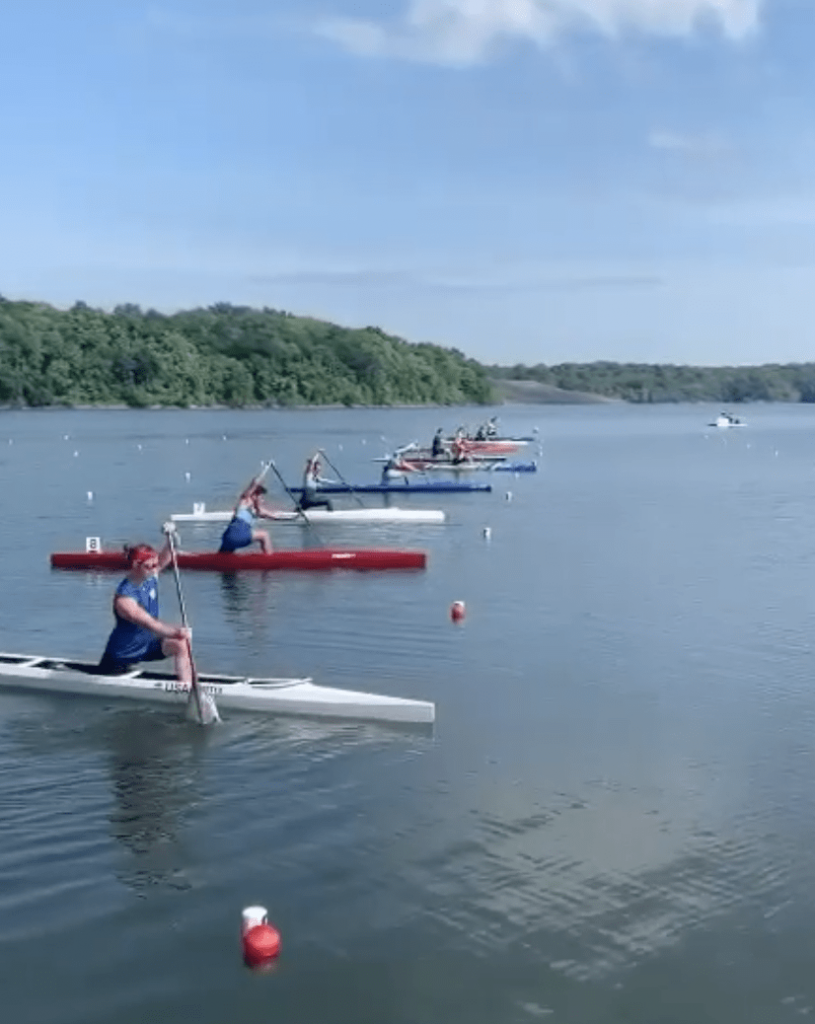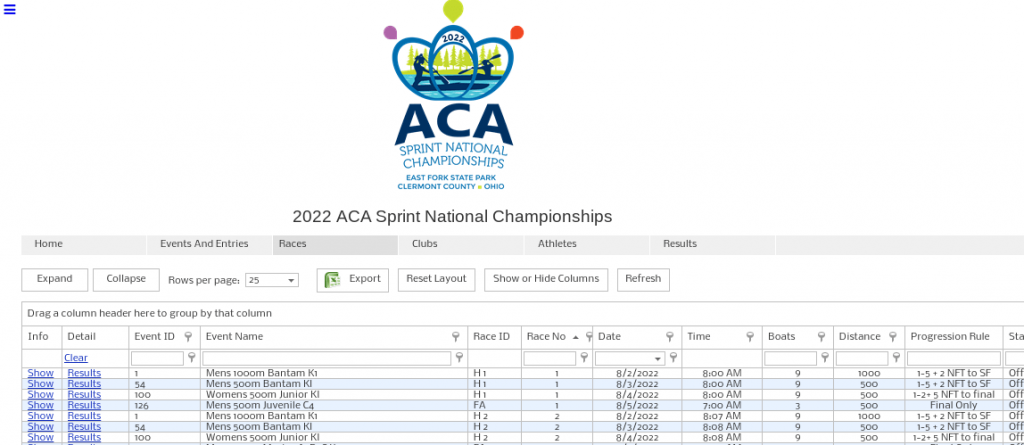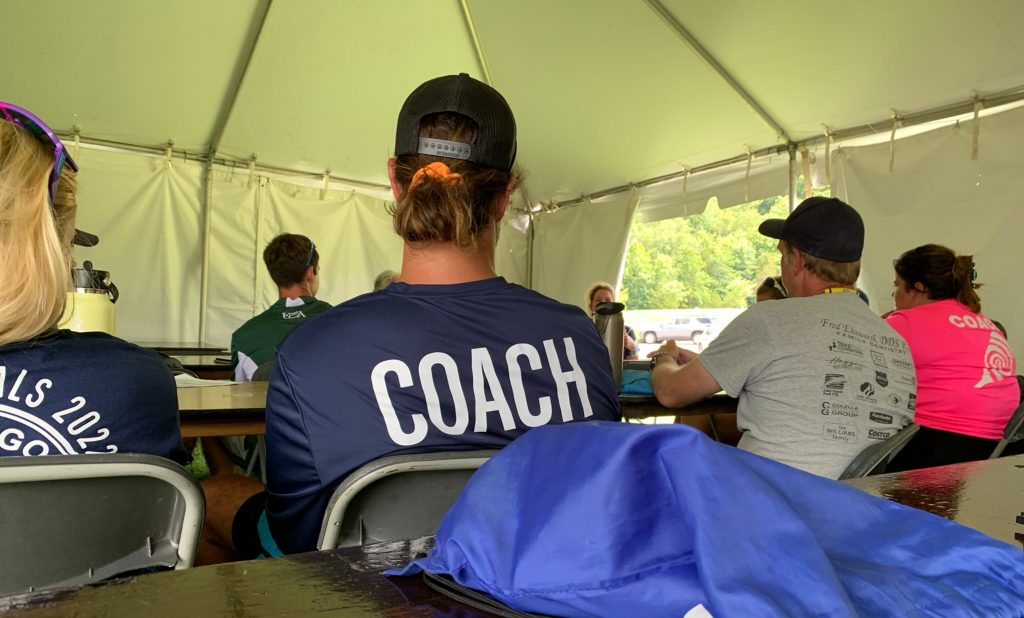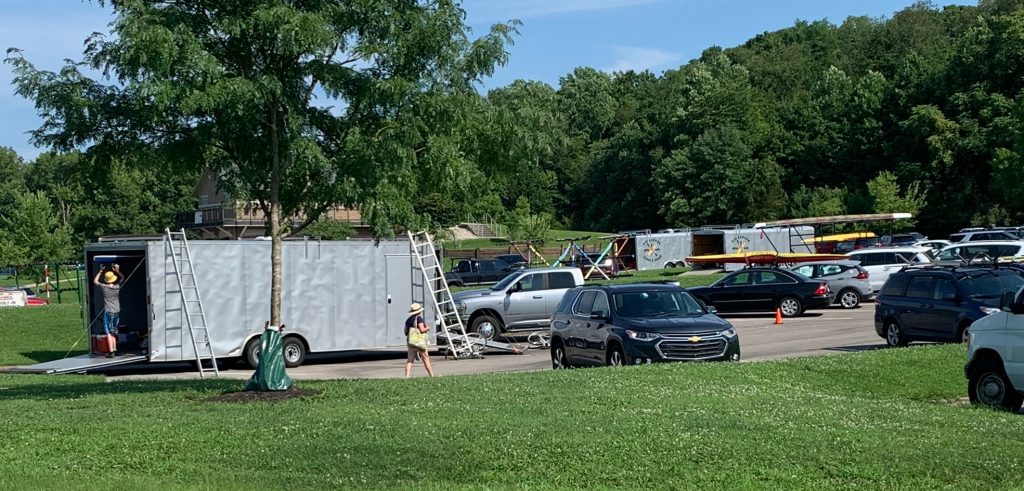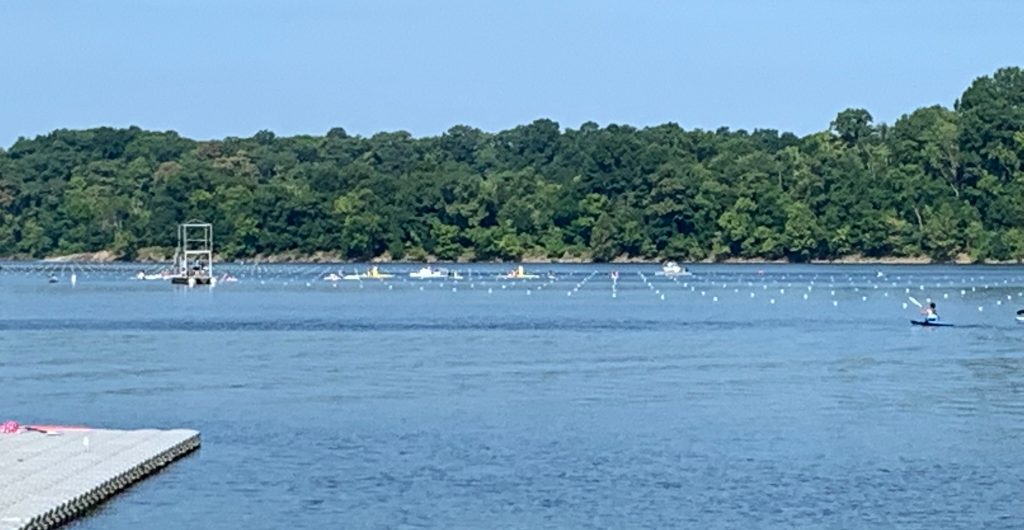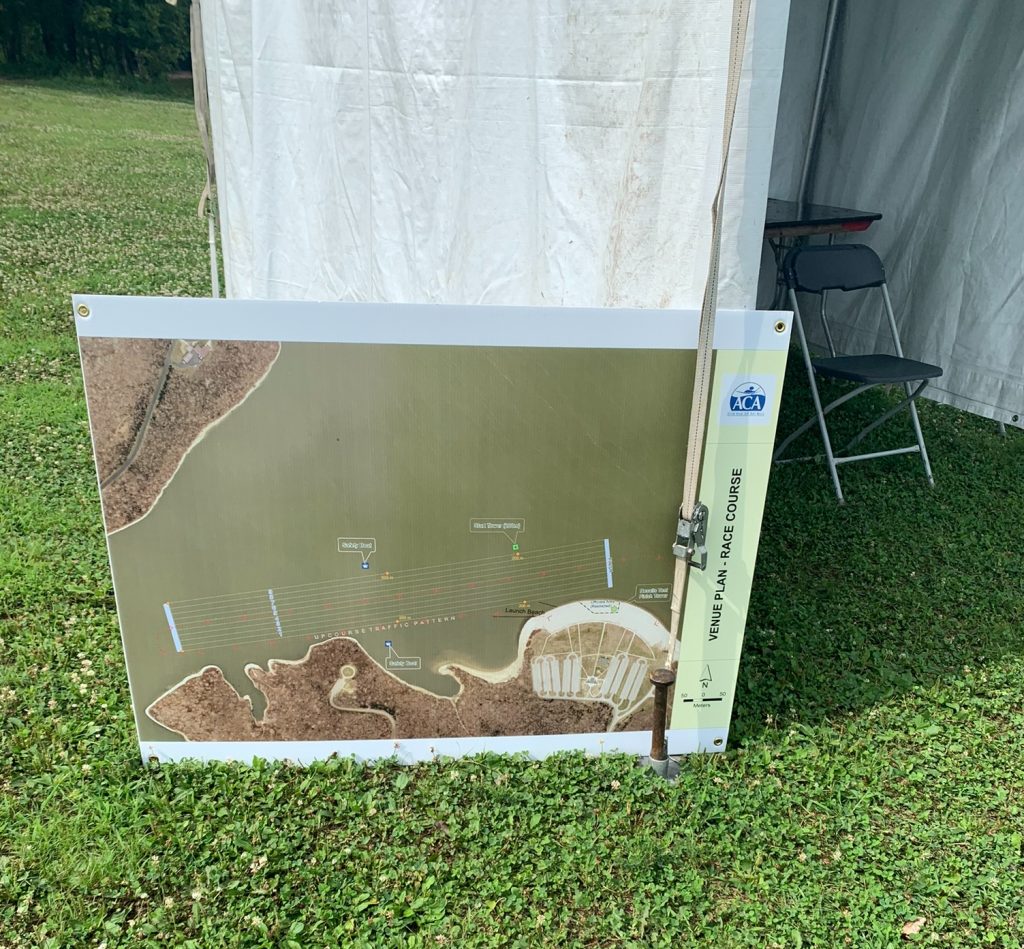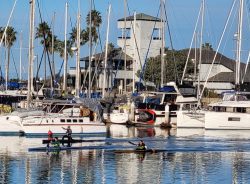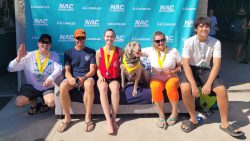For some sprint paddlers in America, the only regatta they will attend all year will be the US Nationals. There may be a club putting on a race near enough for some to attend, or a distance race that a sprint boat can be entered in and raced, but due to the small size of our sport, this could also be the only major race one has to look forward to here in America. This post will provide coaches, officials, athletes, volunteers, and spectators with a description of what to expect at the US Sprint Canoe and Kayak Nationals.
The first thing to note is that Nationals are held at different locations year to year and with different “Local Organizing Committees” being put in charge of setting things up and running the regatta. The LOC and race location may or may not be centered around a club. When a club runs the regatta near or at their main location, it is a great means of generating local interest and support. It is also a great deal of work to take on, which usually means only the larger clubs are capable of successfully hosting a Nationals. Each Nationals regatta will be a bit different. (Photos below are from two different Nationals.)
Nationals have traditionally been held the last week of July or the first week of August. There are very few places in America during this time period that are not hot or hot and humid. Training to race in the heat is an important factor. The races are held over four days and competitors will want to arrive the day before to check in, get their team area set up, and check all boats at boat control for proper weight and measurements. Plan for five very full days and nights plus travel to and from the venue.
Race Entries and Scratch Meetings
Getting entries entered into whatever system has been adopted by the LOC starts usually about a month ahead of the races. Since there are hundreds of races over the four days that comprise the Nationals, this takes time. A conference call is set up by the race officials so that coaches can have a virtual scratch meeting prior to any club starting their trip to the regatta. It is a multiple hours long meeting as coaches also try to create composite team boats for athletes who might otherwise not get to race in a team boat event. Because some age groups may not have enough entries to make a race, or because the athlete is ready to compete at a higher level, some athletes will end up racing in an age class above their current level. This creates challenges for athletes and the LOC to construct a schedule that permits enough rest between races. When athletes have races very close together in the schedule, this is called a “hot seat” or “hot boat.” Athletes are limited to 8 races and 1 or 2 distance events and should expect that they will have a few races that end up with very little time to rest between.
There is always another (and hopefully final) scratch meeting held the day before the races begin. The schedule of races will not be set until the night before the first race and is also very likely to change due to weather events or other circumstances during the regatta. Coaches and officials use a “WhatsApp” texting group to keep up with changes and communicate with one another. Athletes must pay close attention to any changes in the order of events and keep track of how close to the posted schedule the races are actually running. The gap between each race is different depending on the length of the race. Athletes should know which races are being run ahead of their own so that they can note when it is time to warm up and get to the starting area.
Logistics
Since the race can be all the way on the other side of the continent, there are lots of logistical things to work out. Clubs will trailer boats out to the regatta site leaving as much as a week before the first race. Smaller clubs and individuals may be able to caravan and simply carry boats on their cars, but usually it’s a combination of these things to get the equipment to the race course. Driving to a regatta can be cheaper than flying for athletes but this can also mean a significant time investment. In the early years of our club here in Ventura, we would caravan with a 40′ boat trailer, cars packed with athletes, cook food and camp along the way to save money. The camp site could simply be a park or other spot where we could roll out a sleeping bag near the roadway. (Rain could make things…. interesting.) In the past decade, Nationals have been held in Orlando, Oklahoma City, Atlanta, Seattle, San Diego, and just outside Cincinnati. Some of these locations have been used multiple times.
The day before racing starts, the course is usually open for paddlers to use and practice on. For many paddlers, this is the first time they have paddled with lane lines. Getting boats weighed, measured, and approved by officials is also a big task on this day. If different seats or knee pads will be used in the boat, all combinations may need to be checked. Any last minute repairs need to be completed. Clubs also will set up “pop ups” and tents on this day with their boats stored nearby.
Organized clubs will have race numbers ready, white boards with their club members races for the day noted on them, coolers for water/hydration supplements, and food. Since races will usually run from 8AM until 4 or 5PM most days, it is best to have all of your food shopping done prior to the regatta starting. For an 8AM race, athletes will need to be at the course no later than 7:30AM. There is a lunch break in the schedule for each day and the last day of racing tends to be a half day only with just 200 meter finals. Clubs will begin loading boats on trailers and cars, packing up their tents, etc., throughout the last day of racing and may already have all four person boats loaded on trailers the night before if these boats won’t be used on the last day.
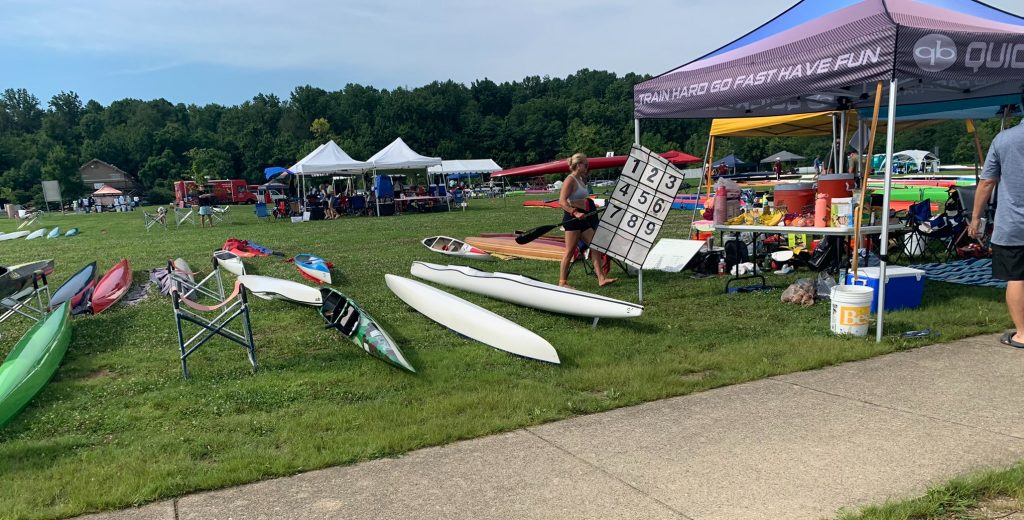
Lanes, Finish Lines, and Boat Control
There are nine lanes in a sprint race course and three different starting points; one each for the 1000, 500, and 200 meter races. (The 5K starts at the finish line heading up the course.). There may be just one starting platform that gets moved during the regatta. There is frequently an area designated as the embarkation dock where athletes check in prior to their race. This lets the starting officials know that the athletes are heading up the course and also gives officials a chance to validate that boats have the correct lane numbers on them before leaving the shore.
As paddlers head up the side of the race course, they must stop paddling when a race goes by and avoid making wakes. (It is also against the rules to coach or yell from a boat along the course.) Safety boats and officials follow the race as it goes down the course with the officials noting if a boat has gone out of its lane. If someone tips over during a race, a safety boat needs to get there quickly since paddlers will not normally be wearing floatation and could be completely winded from the race effort. During the distance races, athletes paddle in the outside lanes of the course and go around buoys at each turn. As there will be multiple classes on the course at the same time, and potential wind wake, there can be rough water to navigate on turns and parts of the course. (It seems to be a given that during an awards ceremony, the water will be flat and glassy, too.)
All races finish at the same spot. There is usually a tower constructed for officials and timers to view the lanes from and a tent for sun protection. One or two video cameras will also be used to help provide accuracy and determine winners when the races are extremely close. (We have had ties several times.) Athletes should know where the finish line really is; it is not the last buoy and may be before or after this spot.
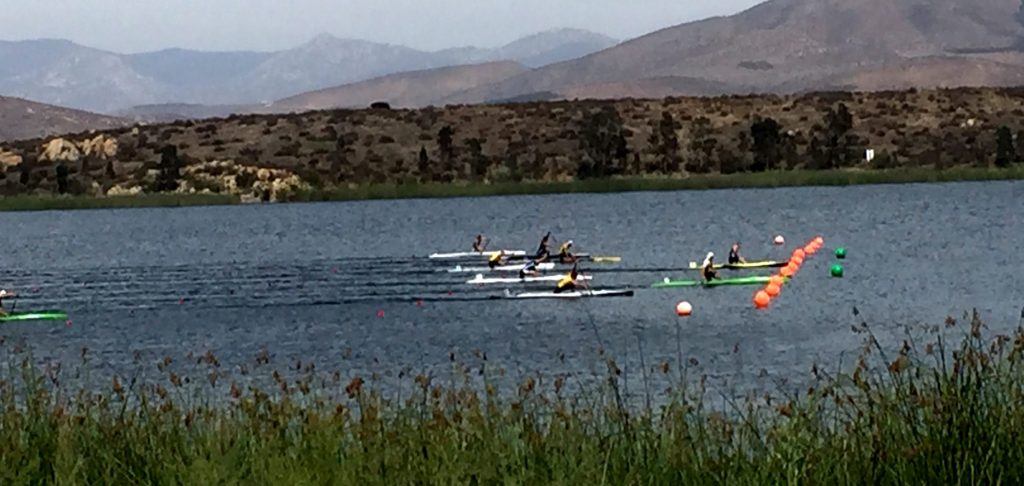
At the finish of each race, at least three boats will be called to go to boat control. Boat control is near the finish line, and is often with a tent, where officials will weigh and inspect boats after each race. A boat that is under weight will result in a disqualification. Times for each race are normally posted online with the race management system within a reasonable time following the race. If the athlete has a hot seat, the boat and or team for the next race should be waiting for him/her at boat control so that they can get to the start of the next race as quickly as possible. If an athlete scratches a race without notification of the officials in an adequate time period, he/she may be disqualified from any other races held that day. Awards may be handed out throughout the day or at a special ceremony at the end of each day.
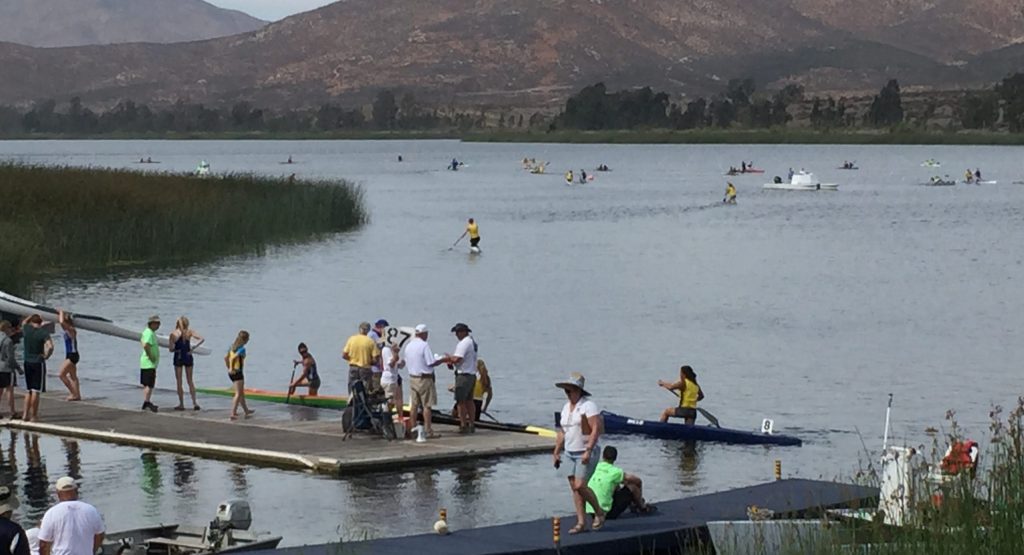
1000 meter races are done on the first day of racing, with some finals perhaps also scheduled on the second day. 500 meter races dominate the second day and go into the third day of racing. 200 meter heats are usually completed on the third day leaving only 200 meter finals to be run on the fourth and final day. The 5K races may be run at the end of each day with different age classes running on different days. Delays or weather events can also push the 5K races to be held later in the regatta with a mass start.
Banquet & Awards
A banquet and awards ceremony where the club and individual trophies are awarded has become a regular routine at Nationals. Once clubs get their trailers and cars packed up, people head off to get cleaned up and off to the banquet. Some paddlers may be leaving for home prior or even that evening, but by and large the banquets are well attended and fun events.
